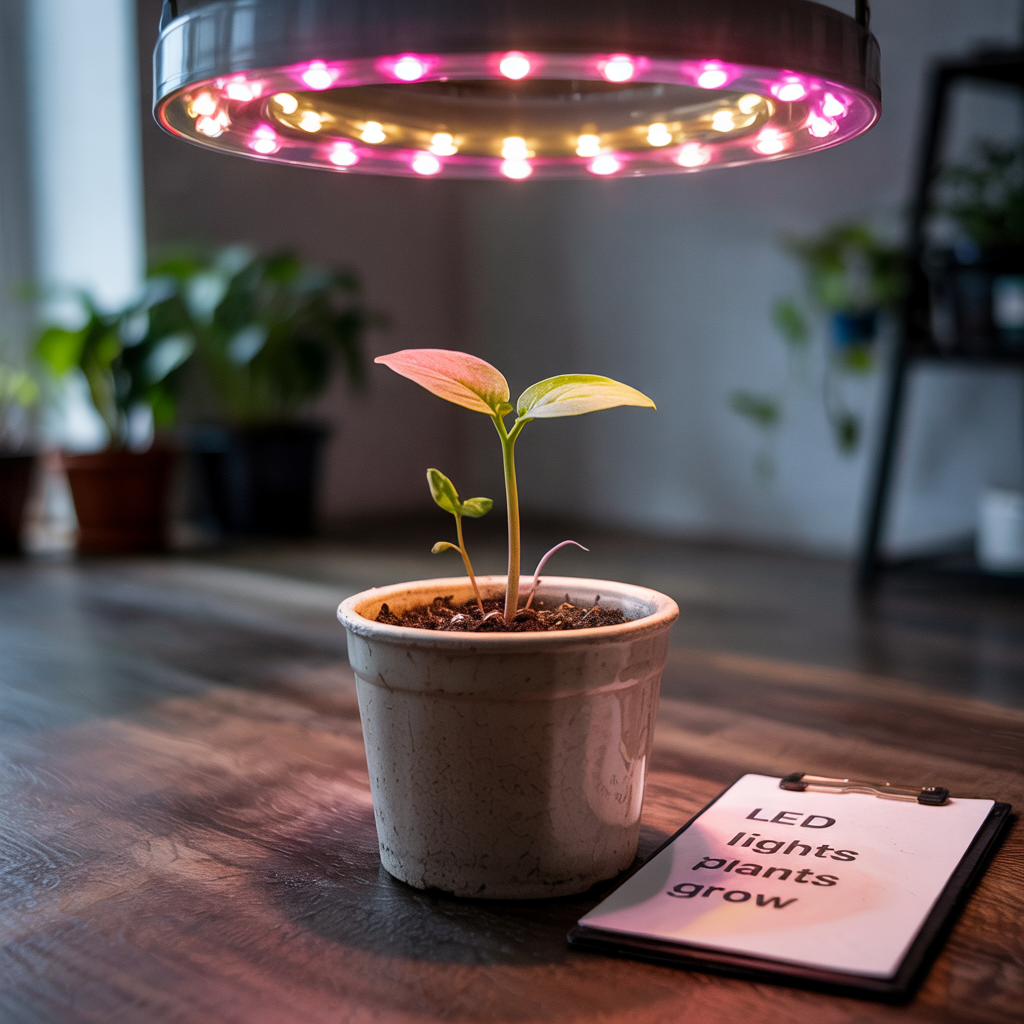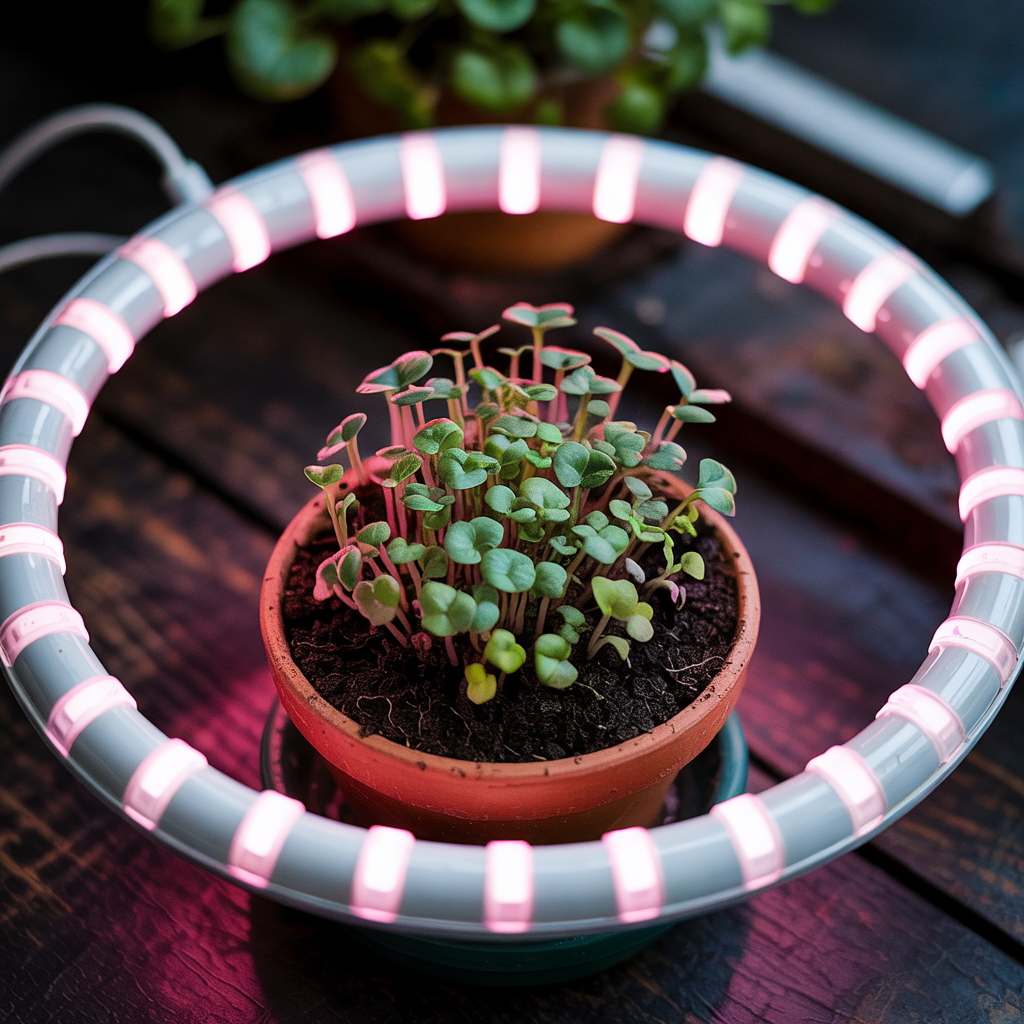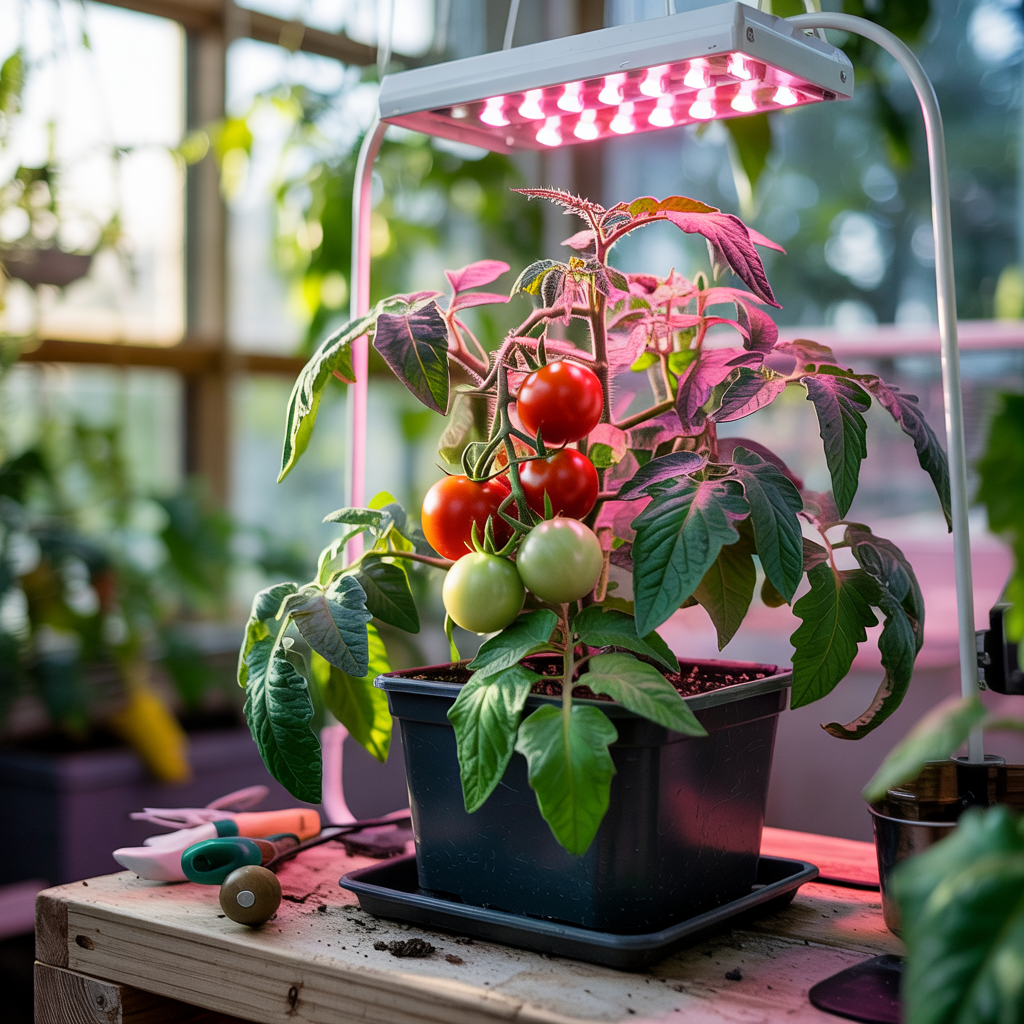Do LED Lights Help Plants Grow? A Comprehensive Guide To Boosting Plant Growth
Do LED lights help plants grow? Yes, LED lights can help plants grow. They emit specific wavelengths—especially red and blue—that support photosynthesis. Full-spectrum LED grow lights closely mimic sunlight, making them effective for indoor gardening. They’re energy-efficient, produce less heat, and can be customized for different plant growth stages. Plants rely on sunlight for photosynthesis,…
Do LED lights help plants grow? Yes, LED lights can help plants grow. They emit specific wavelengths—especially red and blue—that support photosynthesis. Full-spectrum LED grow lights closely mimic sunlight, making them effective for indoor gardening. They’re energy-efficient, produce less heat, and can be customized for different plant growth stages.
Plants rely on sunlight for photosynthesis, the process by which they convert light energy into chemical energy for growth. This process requires specific wavelengths of light, primarily within the red and blue spectrums. Chlorophyll, the primary pigment in plants, absorbs these wavelengths most efficiently.
Do LED Lights Help Plants Grow?
The Light Spectrum and Plant Growth

The visible light spectrum ranges from violet to red, with each color representing a different wavelength. Plants utilize different wavelengths for various growth processes. Blue light promotes vegetative growth (leaf and stem development), while red light stimulates flowering and fruiting. Green light is largely reflected by chlorophyll, which is why plants appear green.
Introducing LED Grow Lights: An Innovative Approach to Plant Illumination
How LED Grow Lights Work
LED (Light Emitting Diode) grow lights utilize semiconductor diodes to produce light. Unlike traditional grow lights (e.g., incandescent or fluorescent), LEDs can be specifically engineered to emit light in the wavelengths most beneficial for plant growth. This precision offers significant advantages in terms of efficiency and effectiveness.
Advantages of LED Grow Lights over Traditional Lighting
-
- Energy Efficiency: LEDs consume significantly less energy than incandescent or fluorescent lights, reducing operating costs.
- Long Lifespan: LEDs have a much longer lifespan, reducing replacement costs and maintenance.
- Precise Spectrum Control: LEDs can be designed to emit specific wavelengths of light tailored to the needs of different plant species at different growth stages.
- Reduced Heat Output: LEDs produce less heat than traditional lighting, minimizing the risk of overheating plants and reducing the need for cooling systems.
- Compact and Versatile Design: LED grow lights come in a variety of sizes and shapes, making them suitable for various growing environments.
Read More: 15 Creative Angled Ceiling Lighting Ideas to Brighten Up Sloped Spaces
Different Types of LED Grow Lights

Full-Spectrum LED Grow Lights
These lights aim to replicate the full spectrum of sunlight, providing a balanced mix of red, blue, and other wavelengths essential for plant growth.
Red and Blue LED Grow Lights
These lights focus primarily on the red and blue wavelengths most crucial for photosynthesis, often omitting green and other less-important wavelengths for improved efficiency.
UV and Far-Red LED Grow Lights
Some advanced LED grow lights incorporate UV (ultraviolet) and far-red light, which can stimulate plant growth, improve yield, and enhance certain plant characteristics (e.g., color, flavor).
Read More: Are LED Lights Dimmable?: The Dimmable Dilemma
Factors to Consider When Choosing LED Grow Lights

Light Intensity (PPFD)
Photosynthetic Photon Flux Density (PPFD) measures the amount of light available for photosynthesis, usually measured in micromoles per square meter per second (µmol/m²/s). Different plants have varying PPFD requirements.
Spectrum (Wavelengths)
The composition of wavelengths emitted by the LED light affects plant growth. Consider whether you need a full-spectrum light, a red/blue light, or a more specialized spectrum.
Coverage Area
Choose a light that adequately covers the area where your plants are growing. This will ensure sufficient light intensity for optimal growth.
Energy Consumption and Heat Dissipation
Consider the light’s energy consumption and its ability to dissipate heat to avoid damaging your plants. A well-ventilated grow space is crucial.
Read More: Do LED lights cause cancer? Separating Fact From Fiction
Setting Up Your LED Grow Lights
Determining the Optimal Light Height
The distance between the light and the plant canopy is crucial. Too close, and plants can burn; too far, and they won’t receive sufficient light.
Light Cycle and Timing
Most plants require a specific light cycle (e.g., 12 hours on, 12 hours off). Adjust the timer on your LED grow light accordingly.
Monitoring Plant Growth and Adjusting Light Settings
Regularly observe your plants for signs of light stress (e.g., leaf burn, stunted growth) or insufficient light (e.g., etiolation). Adjust the light height, intensity, or duration as needed.
Benefits of Using LED Grow Lights for Plant Growth
Increased Yield and Faster Growth
LED grow lights often result in increased yields and faster growth rates compared to traditional lighting methods due to efficient light utilization and precise spectral control.
Improved Plant Health and Quality
Providing plants with the optimal light spectrum can lead to healthier plants with enhanced quality characteristics such as improved color, flavor, and nutrient content.
Energy Savings and Reduced Environmental Impact
LED grow lights are far more energy-efficient than traditional lighting, which significantly reduces environmental impact and operating costs.
Limitations and Potential Challenges of Using LED Grow Lights
Initial Cost
High-quality LED grow lights can have a higher initial cost compared to some traditional lighting options. However, the energy savings and extended lifespan often offset this over time.
Potential for Light Burn
Placing the lights too close to plants can lead to light burn, damaging leaves and hindering growth.
Finding the Right Light for Your Needs
Choosing the right LED grow light requires consideration of several factors, including light intensity, spectrum, coverage area, and plant type.
Comparing LED Grow Lights with Other Grow Light Technologies
LED vs. Fluorescent Lights
LEDs are significantly more energy-efficient, longer-lasting, and offer more precise spectral control than fluorescent lights.
LED vs. High-Pressure Sodium (HPS) Lights
While HPS lights are known for their high output, LEDs offer better energy efficiency, longer lifespan, and improved spectrum control.
LED vs. Incandescent Lights
LEDs are vastly superior to incandescent lights in terms of energy efficiency, lifespan, and spectral control. Incandescent lights produce excessive heat, making them unsuitable for indoor plant growing.
Troubleshooting Common Issues with LED Grow Lights
Leaf Burn
If leaves show signs of burn (e.g., discoloration, wilting), move the lights further away from the plants.
Stunted Growth
Insufficient light can lead to stunted growth. Increase the light intensity or reduce the distance between the light and the plants.
Etiolation (Leggy Growth)
If plants are stretching excessively towards the light source, increase the light intensity or add supplemental lighting.
Advanced Techniques and Considerations
Using a Light Meter to Optimize PPFD
A light meter can accurately measure PPFD, helping to ensure that your plants receive the optimal amount of light.
Adjusting Light Cycles Based on Plant Stage
Light requirements vary depending on the plant’s growth stage (e.g., seedling, vegetative, flowering). Adjust the light cycle accordingly.
Supplemental Lighting Techniques
For larger growing spaces, consider using multiple LED grow lights or combining them with other supplemental lighting.
Choosing the Right LED Grow Light for Your Plants
Identifying Your Plants’ Light Needs
Different plant species have varying light requirements. Research your specific plants to determine their optimal light intensity and spectrum.
Budget and Space Considerations
Consider your budget and available growing space when selecting an LED grow light. Various sizes and wattages are available to meet different needs.
Long-Term Cost Analysis
Factor in the long-term cost savings of energy efficiency and longer lifespan when comparing different lighting options.
Frequently Asked Questions
What is the optimal light spectrum for indoor plant growth?
While a full-spectrum LED grow light is ideal, a combination of red and blue wavelengths is most effective for photosynthesis. The optimal ratio can vary depending on the plant species and its growth stage.
How close should LED grow lights be to plants?
The optimal distance depends on the light intensity and plant type. Start with a greater distance and gradually move the lights closer, monitoring for signs of light burn.
How much light do plants need?
The light requirements vary greatly depending on the plant species. Research your plants’ specific light needs to ensure optimal growth.
Can I use LED grow lights for all types of plants?
Yes, LED grow lights can be used for a wide variety of plants, but choosing the right spectrum and intensity is crucial for each plant type.
How long should I leave my LED grow lights on?
The ideal light cycle varies greatly depending on the plant species and its growth stage. Research your plant’s requirements for optimal growth.
Are LED grow lights energy-efficient?
Yes, LED grow lights are significantly more energy-efficient than traditional grow lights such as incandescent or fluorescent lights.
Final Thoughts
LED grow lights offer numerous advantages over traditional lighting methods for indoor plant growing. Their energy efficiency, long lifespan, precise spectrum control, and reduced heat output make them a compelling choice for both beginner and experienced growers. By carefully considering factors such as light intensity, spectrum, and plant needs, you can effectively utilize LED grow lights to significantly improve plant growth, health, and yield. Remember to monitor your plants closely and adjust light settings as needed to ensure optimal results. While the initial investment might seem high, the long-term savings on energy and the enhanced quality of your crops will make the switch worthwhile. Start researching LED grow lights suited for your plants today and witness the transformative impact of optimized lighting on your indoor garden!

